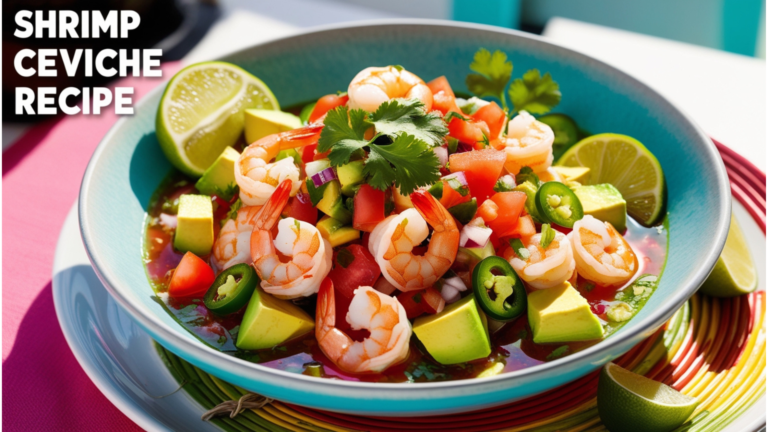Table of Contents
The perfect fish for your next ceviche recipe! Dive into our guide on “What Type of Fish is Best for Ceviche?” and learn how to elevate your ceviche with the freshest and most flavorful options. Whether you’re a seasoned chef or just starting, finding the right fish is key to mastering your ceviche recipe.
Crafting the perfect ceviche is an art, one that begins with the careful selection of fish. The vibrant dish, celebrated across Latin America, hinges on the freshness and quality of the fish used. Not all fish are created equal when it comes to ceviche; the right choice can elevate the dish, while the wrong one can compromise its very essence. This guide delves into the nuances of selecting the best fish for ceviche, offering insights to ensure your dish is both delectable and safe.
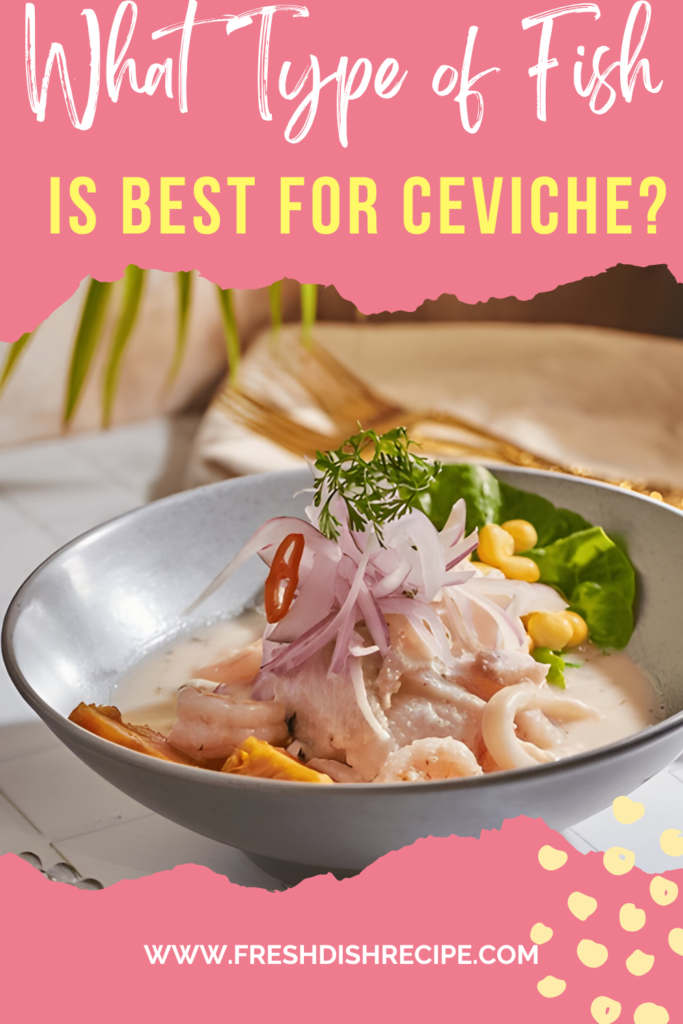
What Is Ceviche?
Ceviche also spelled cebiche or seviche, is a traditional dish that originates from the coastal regions of Latin America, particularly Peru. It consists of raw fish or shellfish marinated in citrus juices, primarily lime or lemon, which “cooks” the seafood through the action of acid. This method not only alters the texture and color of the fish, making it opaque, but also infuses it with vibrant flavors from additional ingredients such as onions, chili peppers, and cilantro. Ceviche is often served cold and is recognized as a flagship dish of Peruvian cuisine, celebrated for its freshness and simplicity.
Is ceviche safe to eat?
Wondering if ceviche is safe to eat? You’re not alone. The short answer is yes, it’s generally safe. While the lime juice in ceviche gives the fish a cooked appearance, it doesn’t kill bacteria the way heat does. But don’t let that scare you off! Just be sure to use fresh, high-quality fish—ideally, wild-caught and immediately frozen. If you’re still concerned, you can lightly poach the fish for a minute or two before making ceviche. Just remember, it won’t have that classic ceviche taste if you cook it all the way through.
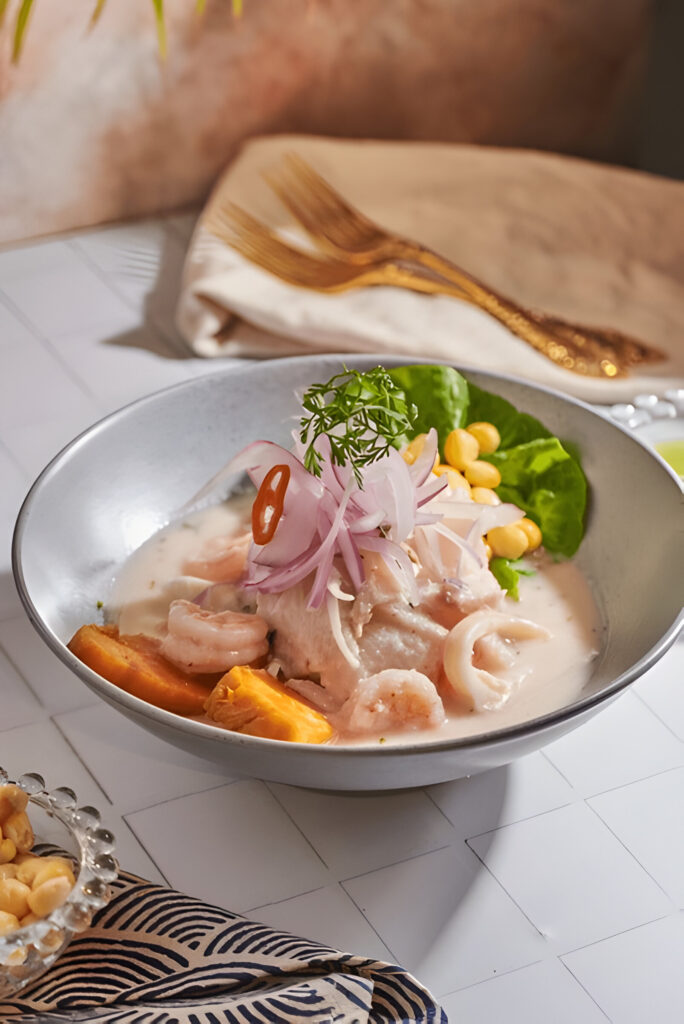
Fish Ceviche Ingredients
To prepare a delicious fish ceviche, you’ll need a variety of fresh ingredients that enhance the flavors and textures of the dish. Here’s a comprehensive list of the essential ingredients commonly used in fish ceviche recipes:
- 1 pound of firm white fish (e.g., halibut, cod, mahi-mahi)
- ½ cup of fresh lime juice (from about 5-6 limes)
- 1 large orange (optional, for sweetness)
- 2 Roma tomatoes, diced
- ½ small red onion, diced
- 1 jalapeño pepper, seeded and finely diced
- 1 cucumber, peeled and diced
- 1 small avocado, diced
- ½ bunch of cilantro, chopped
- Salt and pepper to taste
- Optional: Honey, olive oil, and mint for added flavor.
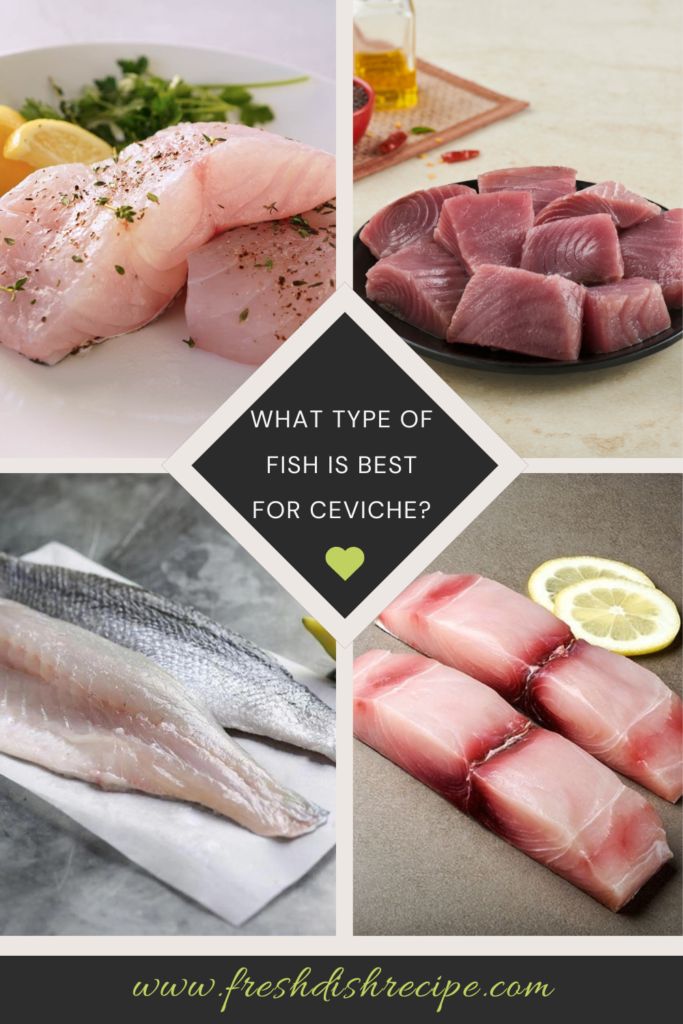
What Type of Fish is Best for Ceviche?
The Best Type of Fish is Best for Ceviche?
Here’s a list of the best types of fish for making ceviche, based on the search results:
- Sea Bass: A traditional choice for ceviche, especially in Peruvian recipes, known for its firm texture and mild flavor.
- Grouper: Offers a slightly sweet taste and holds up well in marinades, making it an excellent option for ceviche.
- Halibut: Prized for its delicate flavor and firm texture, halibut is a popular choice in many ceviche recipes.
- Mahi Mahi: This versatile fish is mild and firm, making it suitable for ceviche preparations.
- Tuna: Often used in Mexican ceviche, tuna provides a rich flavor and is commonly found in sashimi-grade quality.
- Cod: While some sources suggest it may not always be ideal due to its texture, cod is still a popular option for ceviche in many regions.
- Red Snapper: A favorite in various ceviche recipes, it is known for its mild flavor and firm flesh.
These fish types are favored for absorbing the citrus marinade while maintaining a pleasant texture, making them ideal for ceviche dishes.
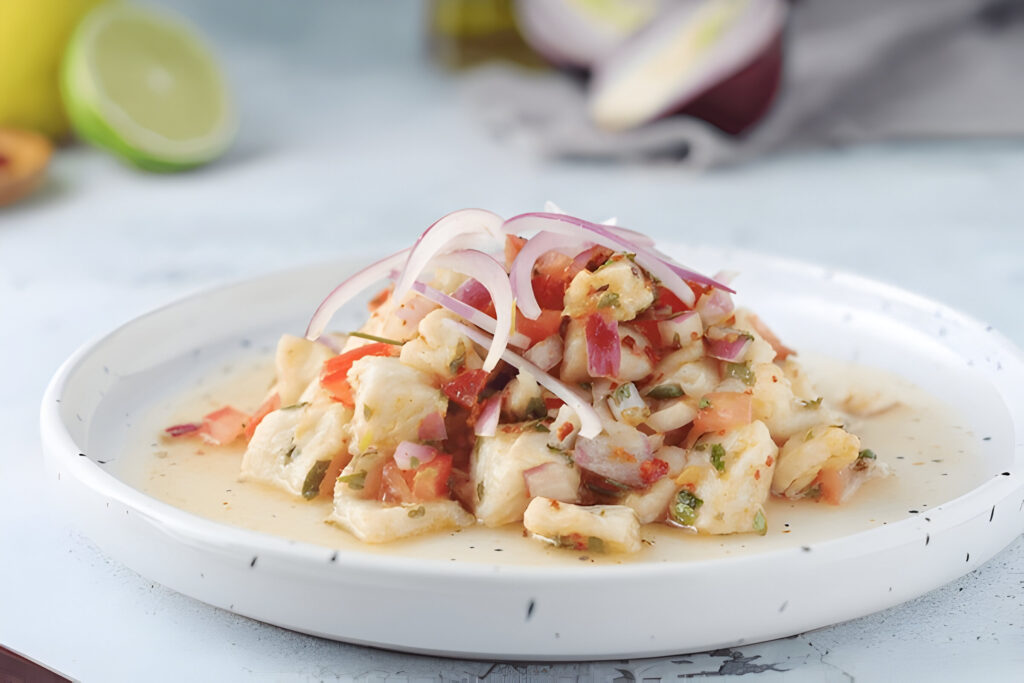
Tips for Preparing Ceviche
To prepare ceviche successfully, consider the following tips that focus on uniform cutting, marination times, and additional ingredients to enhance flavor:
Tips for Preparing Ceviche
Importance of Uniform Cutting for Even Marination
- Cut Fish into Small, Uniform Pieces: Ensure that the fish is diced into small, bite-sized cubes (about 1/2 inch). This increases the surface area, allowing the citrus juice to penetrate evenly and “cook” the fish properly. Uniform cutting also ensures that all pieces marinate at the same rate, leading to consistent texture and flavor throughout the dish.
Recommended Marination Times to Avoid Overcooking
- Marination Times: The typical marination time for ceviche is between 20 to 30 minutes. This duration allows the fish to become opaque while remaining tender. For a more “well-done” texture, you can marinate for up to 1 hour. However, marinating for more than 2 hours is not recommended, as the fish can become tough and rubbery due to the acidity of the citrus juice. After 4 hours, the fish may lose its desirable texture altogether.
Suggestions for Additional Ingredients to Enhance Flavor
- Fresh Vegetables: Add diced tomatoes, cucumbers, and red onions for crunch and flavor. These ingredients enhance the taste and add visual appeal to the dish.
- Herbs: Incorporate fresh cilantro for a burst of freshness. You can also experiment with other herbs like mint for a unique twist.
- Spices and Heat: Include finely chopped jalapeños or serrano peppers to add a kick of spice. Adjust the amount based on your heat preference.
- Fats: Consider adding diced avocado for creaminess, which balances the acidity of the marinade. A drizzle of olive oil can also add richness to the dish.
- Citrus Variations: While lime juice is traditional, a splash of orange juice can add a sweet note that complements the dish.
Conclusion
When selecting fish for ceviche, focus on freshness, texture, and mild flavor. Choose firm white fish like sea bass, grouper, or halibut. Cut into small, uniform pieces and marinate for 20-30 minutes. Enhance with fresh veggies, herbs, and spices.
Don’t be afraid to experiment with different fish and seafood. Ceviche is versatile – try shellfish or even fruit and veggie versions. The key is using the best ingredients and letting your creativity shine. Happy ceviche-making!
So, what are you waiting for? Grab your knife, your favorite fish, and let’s dive into the world of ceviche together! Share your recipes, tips, and experiences, and let’s celebrate the art of ceviche-making.






